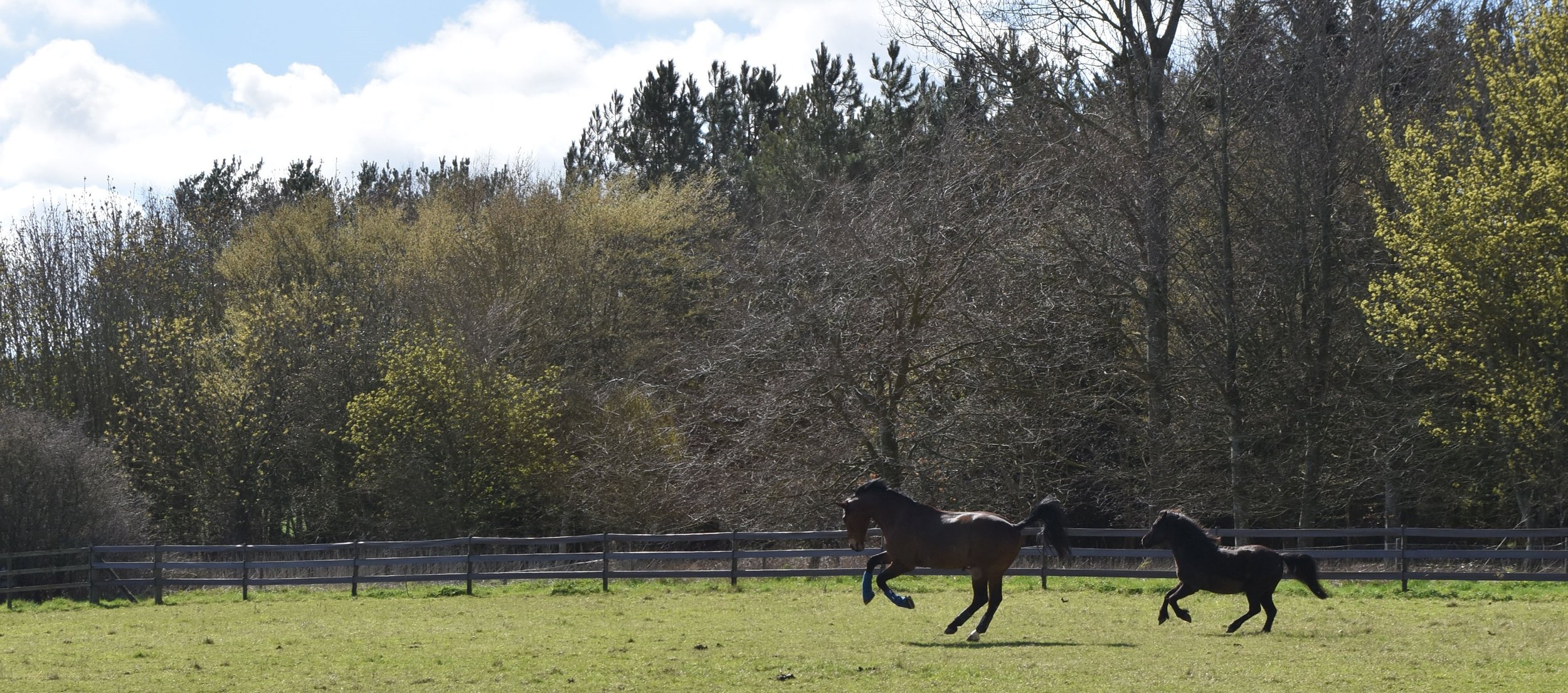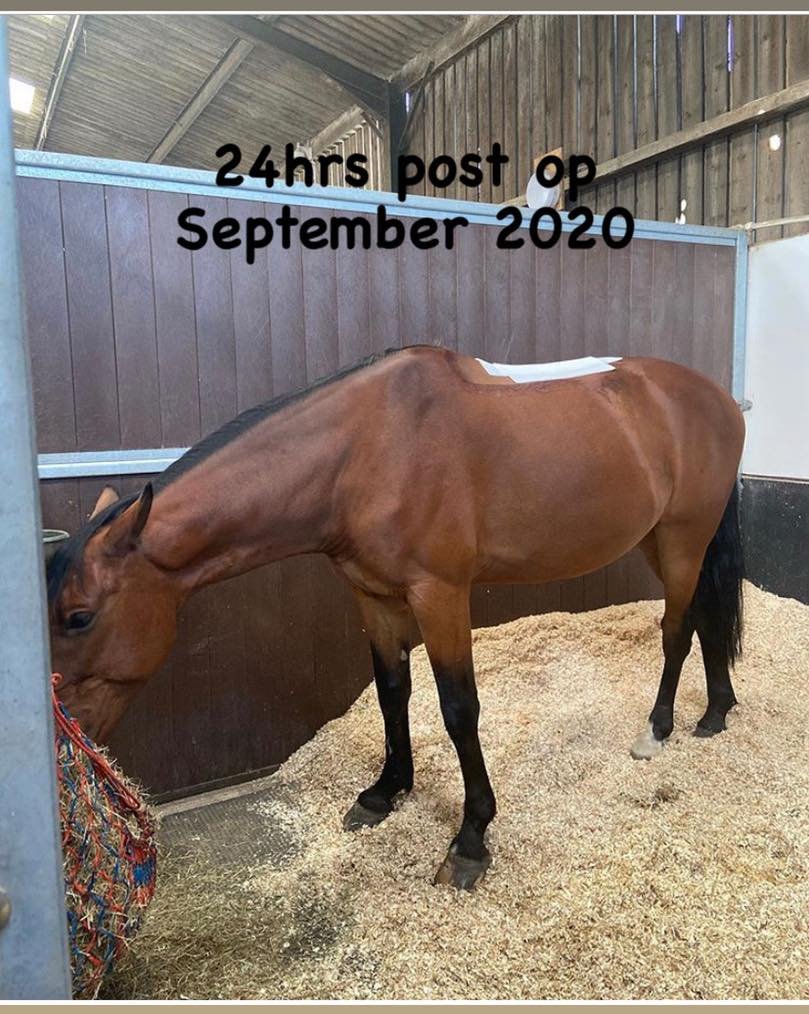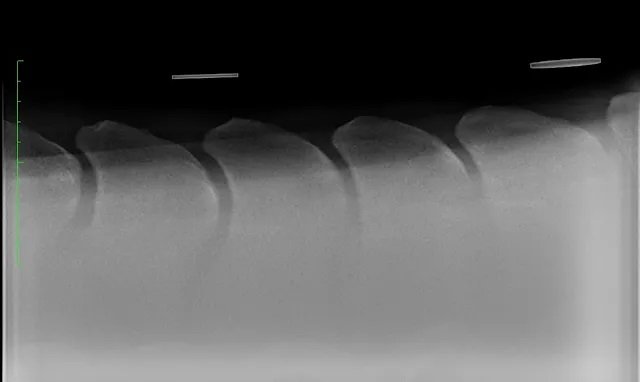
Kissing Spine
Kissing Spine is also known as Overriding Dorsal Spinous Processes and is one the most common causes of back pain. It is where the spinal vertebrae 'kiss' each other and causes pain and muscle atrophy. Sometimes, the vertebrae do not actually need to be touching but bone spurs can cause pain when ridden.
At Sky Equine Rehabilitation, we specialise in being able to support you and your horse through the often upsetting diagnosis of Kissing Spine.
We are able to take your horse direct from the vets where surgery is performed and provide them with the box rest that’s needed and begin that recovery process. During the recovery stage post-op, we start to provide simple and gentle physiotherapy whilst ensuring that the plan given by your vet is followed.
With our boxes being light and airy with a viewing window, your horse will get the peace and quiet they deserve, whilst you as an owner get peace of mind that your horse is being taken care of.
We have rehabbed a number of horses through Kissing Spine with two of Sky Equine Rehabilitation’s residents, Troy and Mo, being 2-3 years post-op and both back to full fitness. Troy’s journey can be read below.
Troy's Story of Kissing Spine
Assessment & Diagnosis
After a full lameness workup from the Vet, X-Rays were taken of a clients horse’s back and it was clear that the horse, Troy, had bone spurs growing on various vertebrae which when he was static didn't seem to cause too many issues.
However, with the behavioural changes he was showing, for instance not wanting to go forward, avoiding the contact and rearing (among others), the vertebrae were impinging on the ligaments and causing him pain.
Troy was also showing back pain with muscle stiffness, extreme palpation reactions around the lumbar and sacrum regions and stiffness when working.
ISLD Operation
Troy's ISLD operation was booked for mid September and it would be carried out at the Vet's rehabilitation centre. The operation was performed while he was standing up but Troy was sedated and then local anaesthetic was put into the regions where the ligaments would be snipped. Troy had 9 ligaments snipped in total and the rehabilitation back from this size of operation would be difficult and long but with a good Physiotherapy, Rehabilitation Plan and patience, I was sure we would get him back to full health and fitness. He stayed at the rehabilitation centre for the first 14 days to minimise the infection of the incision sites and I am pleased to say that no infections were seen.
Physiotherapy & Rehabilitation
Included in the initial Physiotherapy plan was Red Light Therapy and this proved to be the most beneficial in the healing of the incision sites and has meant that Troy's back has healed excellently and unless you knew, you would not know the incisions were there. Maintaining flexibility through the incision areas is key as this is the last place you would want to have decreased flexibility and movement, restricted by scarring.
Throughout the first few weeks following the operation, we used a combination of Pulsed Electromagnetic Field Therapy, Therapeutic Ultrasound, simple massage techniques and TENS therapy. Having a mixture of these modalities and techniques meant that we could target different areas like pain, swelling, inflammation and encourage his body to enhance the healing process. Troy was due to be on box rest for approximately 6 weeks and so we needed to combat stiffness and prevent his legs from filling. He was hand walked every day and from week 3 he started his lunging work, firstly in walk and increasing to trot in week 5. If he could be trusted too, he would get small amounts of restricted paddock turnout... that didn't always go to plan but we did the best we could for him. The main priority of getting him safely through box rest and turnout/exercise was to keep it varied so we included long reining and in hand hacking.
Core and Back Strengthening
Once exercise and restricted turnout could commence, we needed to concentrate on building his strength through his core and back... this would be the key to ensuring that he was able to return to full fitness and live a fulfilled life with his owner. I implemented a stretching and mobilisation programme showing his owner what she needed to do in between my visits and the frequency of them. Work in the school could now include poles and continued trotting. Luckily their yard has access to some great hacking routes and so walking out up and down hills would be really beneficial. We also started to introduce a core strengthening band which is worn round the back of the legs and encourages the horse to use it's core and thoracic sling muscles. I cannot stress enough just how important those core muscles will become now and its not just the tummy muscles which are included in the 'core' group of muscles.
I started to think outside the box and introduced Troy and his owner to the Balance Pads (see picture). These would allow Troy to find his own centre of balance using all his core muscles and start to activate a deep back muscle called the Multifidus. This muscle is the main stabiliser of the body and is needed more than ever now for Troy.




Update on Troy today
Troy has been continuing to make great progress and now has regular lessons with his owner and rider in flatwork and dressage to continue increasing his strength. Since it has been two years since the start of this journey, his owner decided it was time to get an overall assessment of Troy from her Vet, Nikki of Farr & Pursey in Hertfordshire. Nikki came out and was incredibly pleased with his current condition, weight and muscle strength. They did a sensor work up and Troy was foot perfect - in fact Nikki couldn't find anything wrong at all, noting that if he was presented for a vetting, he would be passed! This was excellent news and we couldn't be happier. The last two years have had their ups and down, elations and tears but it has definitely been worth it to see him happy and healthy.
If you get a diagnosis of Kissing Spine from your vet, don't despair. At Sky Equine Rehabilitation, we can help and support you through the diagnosis, recovery and rehabilitation of Kissing Spines. We work closely with your vet to ensure that their requirements are being met and that your horse can get the best care possible. The initial care and rehab can be very intensive and often frightening for owners and so we can help to reduce that stress for you and your horse. In most cases, this is something which is included in your insurance claim. We were fortunate enough to receive a recommendation and testimonial from Troy's acting vet which can be found below.
If we can help at all, then please drop Katie a message and we would be happy discuss a bespoke package with you.
The Vet’s Opinion
“ I have recently worked extremely closely with Katie on the rehabilitation of a horse suffering from “Kissing Spines”. At every step of the way Katie has gone above and beyond in her planning and implementation of a rehab protocol and treatment of the horse and she has always kept me extremely well informed of the horse’s progress and contacted me if she has any concerns. I am thrilled with the outcome of the patient involved and this is in no small part due to Katie’s diligent work. It has been an absolute pleasure to work with Katie and I have no hesitation in recommending her to clients. ”
— Nikki Pursey, Farr & Pursey Vets



